Vertical vegetable gardens are an excellent way to maximize space and grow your own produce at home. With limited access to land or small balconies, a vertical garden allows you to grow a variety of vegetables in a compact and efficient manner.
Creating a vertical vegetable garden not only saves space but also offers numerous benefits such as easy access to your plants, protection from pests, and efficient use of water and nutrients. Whether you’re a seasoned gardener or a beginner, a vertical vegetable garden provides a convenient and sustainable solution for growing vegetables in urban spaces.
We will explore the different methods, benefits, and tips for successfully creating and maintaining a vertical vegetable garden. So let’s dive in and get started on your journey to green thumbs and homegrown veggies!
Benefits Of Vertical Vegetable Gardens
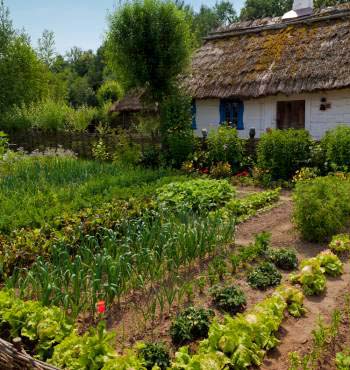
Discover the advantages of vertical vegetable gardens for maximizing space, improving air circulation, and reducing pest problems. These gardens also provide easy access for planting, watering, and harvesting, making them a convenient and efficient choice for urban and small-space gardeners.
Vertical vegetable gardens offer numerous benefits for both urban and small-space gardeners. Let’s explore some of the key advantages that make vertical gardening a popular and practical choice:
Maximizing Limited Space
With limited outdoor space, growing your own vegetables can seem like an impossible task. However, vertical vegetable gardens provide a solution by maximizing every inch of available space. By utilizing vertical structures such as walls, fences, or trellises, you can grow a variety of vegetables without sacrificing valuable ground space.
Vertical gardens not only allow you to grow your favorite veggies but also open up possibilities for those living in apartments or homes with a small backyard. Whether it’s a balcony, patio, or even a sunny window, you can transform any small area into a bountiful garden.
By going vertical, you can enjoy the satisfaction of harvesting your own fresh produce while making the most of your limited space.
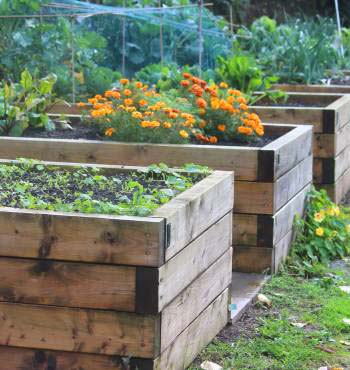
Improving Air Quality
Aside from optimizing space, vertical vegetable gardens also play a role in improving air quality. Vegetation, in general, has a remarkable ability to filter the air, but vertical gardens take this benefit to the next level.
By incorporating an abundance of leafy vegetables and herbs into your vertical garden, you create a natural air purifier. These plants absorb pollutants, release oxygen, and help eliminate harmful toxins present in the surrounding environment.
This natural air purification system becomes even more significant in urban areas, where air pollution is a widespread concern. With a vertical vegetable garden, you can contribute to creating a healthier atmosphere for yourself and your community.
Furthermore, a vertical garden’s lush green foliage can help reduce the urban heat island effect by providing shade and cooling the surrounding area.
In addition to space-saving advantages, vertical vegetable gardens offer the dual benefit of improving air quality, making them an excellent choice for urban dwellers looking to make the most of their available space.
Choosing The Right Vegetables
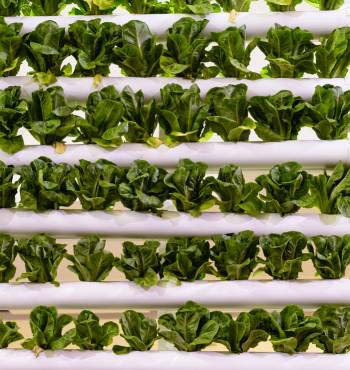
When it comes to creating a vertical vegetable garden, choosing the right vegetables is crucial. Not all vegetables thrive in vertical gardening conditions, so it’s important to select varieties that are well-suited for this type of setup. In this section, we will discuss two key factors to consider when choosing vegetables for your vertical garden: understanding sunlight requirements and selecting compact varieties.
Understanding Sunlight Requirements
Before you start selecting vegetables for your vertical garden, it’s important to understand their sunlight requirements. Some vegetables, like tomatoes and peppers, require a lot of direct sunlight to grow and produce a bountiful harvest. Others, like lettuce and spinach, can tolerate partial shade.
Take note of the sunlight patterns in your garden area. Observe how the sun moves throughout the day and identify the spots with the most sunlight. This will help you determine which vegetables will thrive in your vertical garden. Ideally, you want to choose vegetables that match the amount of sunlight available in your garden area.
Selecting Compact Varieties
In a vertical garden, space is often limited. That’s why it’s important to select compact varieties of vegetables that do not require a lot of room to grow. Compact varieties are typically bred to have a more vertical growth habit, allowing them to thrive in small spaces.
When choosing compact varieties, look for keywords such as “bush,” “dwarf,” or “compact” in their names or descriptions. These varieties are known to have a smaller size compared to their traditional counterparts, making them ideal for vertical gardening.
| Vegetable | Sunlight Requirements | Compact Variety |
| Lettuce | Partial shade | Buttercrunch |
| Tomatoes | Full sun | Roma |
| Peppers | Full sun | Jalapeno |
Here is a list of some common vegetables and their sunlight requirements:
- Lettuce – Partial shade
- Tomatoes – Full sun
- Peppers – Full sun
Remember, not all vegetables have compact varieties available. In such cases, prioritize the ones that require less space to grow and can adapt to vertical gardening conditions.
By understanding the sunlight requirements and selecting compact varieties, you can ensure a successful vertical vegetable garden that yields a variety of delicious homegrown produce.
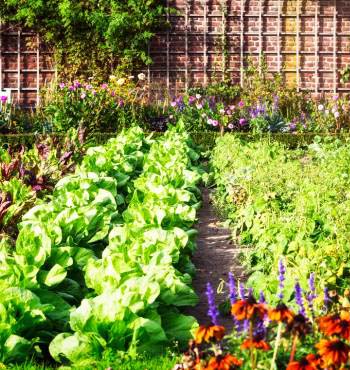
Designing And Building Your Vertical Garden
Designing and building a vertical vegetable garden can be a fun and rewarding project for gardening enthusiasts. Whether you have limited space or simply want to maximize the use of your available area, a vertical garden offers a creative and practical solution. In this section, we will explore the key aspects of designing and building your very own vertical vegetable garden, including determining the best location and selecting appropriate support structures.
Determining The Best Location
Before diving into the construction of your vertical garden, it’s essential to identify the best location for optimal plant growth. Choose a spot that receives adequate sunlight throughout the day, as most vegetables thrive in at least six to eight hours of direct sunlight. Additionally, consider accessibility for watering and maintenance, ensuring that the location is convenient for regular care and attention.
Selecting Appropriate Support Structures
When it comes to building a vertical garden, selecting the right support structures is crucial for ensuring stability and longevity of your garden. Evaluate the available options such as trellises, wall-mounted planters, or freestanding vertical garden systems. Consider the weight-bearing capacity of the chosen structures and ensure they are securely anchored. Utilize durable materials that can withstand outdoor conditions, supporting the weight of the plants and the growing medium.
Maintaining Your Vertical Vegetable Garden
Maximizing space and productivity, maintaining your vertical vegetable garden is a smart choice for urban gardeners. With careful attention to watering, pruning, and fertilizing, you can keep your plants thriving and enjoy a bountiful harvest.
Maintaining Your Vertical Vegetable Garden Once you have set up your vertical vegetable garden, it is important to ensure its ongoing care and maintenance. Watering and fertilizing, as well as pest and disease management, are two crucial aspects that need to be taken into consideration. By following these practices, you can help your plants thrive and yield a bountiful harvest. H3: Watering and Fertilizing Watering your vertical vegetable garden is vital to the health and growth of your plants. Since vertical gardens tend to have limited soil space, it is essential to provide adequate moisture to sustain the plants.
Avoid overwatering as it can lead to root rot, but don’t let the soil dry out completely either. It’s all about finding the right balance. One effective way to monitor moisture levels in your vertical garden is by using a moisture meter. This handy tool can help you determine when it’s time to water your plants. In general, aim to keep the soil consistently moist but not saturated. Fertilizing is another key aspect of maintaining your vertical vegetable garden. Since plants in vertical gardens have limited access to nutrients, it is important to provide them with regular fertilizer applications to ensure healthy growth.
Consider using organic fertilizers, such as compost or fish emulsion, to provide a well-rounded nutrient profile for your plants. One effective method is to create a schedule for fertilizing your vertical garden. This can help ensure that your plants receive the necessary nutrients at the right time. Be sure to follow the instructions provided with the fertilizer and apply it in the recommended quantities to avoid any damage to your plants. H3: Pest and Disease Management Just like traditional gardens, vertical vegetable gardens are also prone to pests and diseases.
To maintain the health of your plants, it’s important to stay vigilant and take preventive measures. One effective strategy is to regularly inspect your plants for any signs of pests or diseases. Look for common garden pests like aphids, caterpillars, or spider mites, as well as signs of damage such as yellowing leaves or wilting. If you spot any issues, take immediate action to prevent further spread. Consider using natural pest control methods, such as introducing beneficial insects like ladybugs or planting companion plants that repel pests. Additionally, practicing good garden hygiene by removing any dead or diseased plants can help prevent the spread of diseases.
Harvesting And Enjoying Your Homegrown Produce
When it comes to gardening, the real joy lies in the art of harvesting and enjoying the fruits of your labor. With a vertical vegetable garden, you have the convenience of growing your own produce right in your backyard or even on your balcony. In this section, we will explore the optimal harvesting techniques and creative culinary uses for the homegrown vegetables from your vertical garden.
Optimal Harvesting Techniques
Harvesting your homegrown vegetables at the right time is crucial for flavor and nutritional value. Follow these optimal harvesting techniques to ensure you enjoy the best produce:
- Check for maturity: Look for visual cues such as color, size, and firmness to determine if the vegetable is ripe and ready for harvest.
- Harvest early in the day: Early mornings are the ideal time to harvest, as the plants are hydrated and temperatures are cooler.
- Use sharp tools: Use a clean, sharp pair of garden shears or a knife to cut the vegetables from the plants. This reduces damage to the remaining plant and minimizes the risk of disease.
- Support the plant: Support taller plants, such as tomatoes or beans, with one hand while using the other hand to harvest the vegetables. This prevents any accidental damage to the plant.
- Handle with care: Handle the harvested vegetables gently to avoid bruising or crushing them. Place them in a clean container or basket.
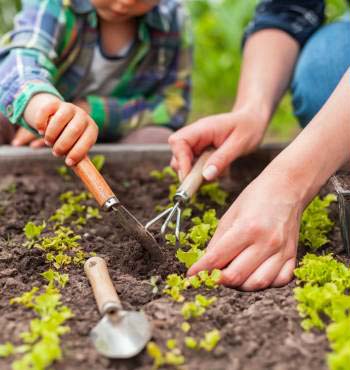
Creative Culinary Uses
The beauty of homegrown produce lies not only in their freshness but also in their versatility in the kitchen. Here are some creative culinary uses for the vegetables you harvest from your vertical garden:
- Salads and stir-fries: Freshly harvested leafy greens and herbs are perfect for vibrant salads and quick stir-fries.
- Savory soups: Use your homegrown tomatoes, carrots, and other vegetables to whip up delicious, hearty soups.
- Grilled delights: Marinate your homegrown zucchini, eggplant, or bell peppers and throw them on the grill for a flavorful barbecue experience.
- Succulent sauces: Turn your vertical garden tomatoes into rich pasta sauces or salsas that will elevate your home-cooked meals.
- Herb-infused oils and dressings: Experiment with making your own herb-infused oils and dressings using the aromatic herbs from your garden.
These creative culinary uses will not only showcase the flavors of your homegrown produce but also inspire you to explore new recipes and embrace a healthier lifestyle.
FAQ For Vertical Vegetable Garden
What Vegetables Work Best In A Vertical Garden?
The best vegetables for vertical gardens are lettuce, strawberries, peppers, herbs, and tomatoes.
What Vegetables Grow Straight Up?
Some vegetables that grow straight up include tomatoes, cucumbers, beans, peas, and peppers. These can be trained to grow vertically for easy maintenance and space-saving.
Can You Make A Vertical Vegetable Garden?
Yes, you can create a vertical vegetable garden. It allows you to grow vegetables in limited space, using vertical structures like walls or trellises. This method maximizes the use of vertical space, making it suitable for small gardens or balconies.
Conclusion
A vertical vegetable garden offers a practical and space-saving solution for growing fresh produce at home. Its adaptable design and numerous benefits make it a popular choice for both novice and experienced gardeners. Embracing this innovative gardening approach can lead to a bountiful harvest, while also adding aesthetic value to any outdoor space.






